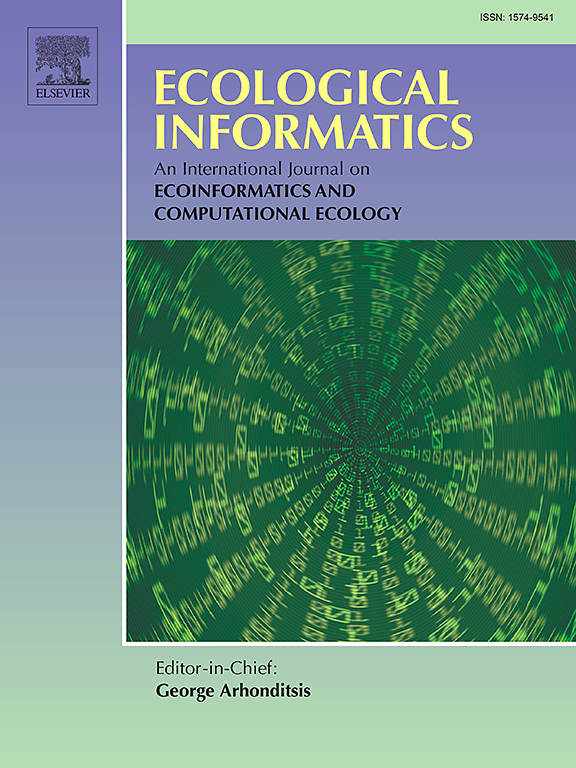Identification and spatio-temporal analysis of Ulva prolifera in a typical coastal area using SAR imageries
IF 5.8
2区 环境科学与生态学
Q1 ECOLOGY
引用次数: 0
Abstract
The occurrence of Ulva prolifera (U. prolifera) can cause significant environmental damage in coastal areas, making its monitoring crucial. Remote sensing technology provides an effective tool for large-scale monitoring of U. prolifera. Most studies rely on optical images to monitor U. prolifera, which are highly dependent on weather conditions. Synthetic Aperture Radar (SAR) can penetrate clouds, rain, and fog, providing clear observations of ocean surfaces in a large scale regardless of time of day. However, current research on SAR data for U. prolifera detection primarily focuses on SAR intensity or amplitude information, while its rich polarimetric data remains underutilized. This paper presents U. prolifera Detection Network (UDNet), an intelligent detection framework based on the DeepLabV3+ deep learning model, leveraging amplitude and polarimetric information from Sentinel-1 dual-polarimetric imageries. To construct the proposed model, 2283 samples were annotated using SAR images of the Yellow Sea, of which 1737 samples were used for training and 546 samples were used for validation and testing. The well-trained model was used to detect U. prolifera in a typical coastal area from 2018 to 2021. The experimental results demonstrate that the proposed UDNet achieves superior performance with an overall accuracy of 0.9859, a mean intersection over union of 0.9198, and an F1 score of 0.9239. Spatio-temporal distribution analyses indicate that the most severe outbreak of U. prolifera in the study area occurred in 2019, with intensive occurrences in June of each year. The outbreak was more severe in the southwest region of the study area than in the northeast. Besides, it was observed that the outbreak area of U. prolifera was larger at night than that during the day, mainly driven by changes in summer temperature. In addition, a larger diurnal temperature difference generally promoted the growth of U. prolifera. These findings are instrumental in formulating management policies and taking actions to control the outbreak of U. prolifera.
求助全文
约1分钟内获得全文
求助全文
来源期刊

Ecological Informatics
环境科学-生态学
CiteScore
8.30
自引率
11.80%
发文量
346
审稿时长
46 days
期刊介绍:
The journal Ecological Informatics is devoted to the publication of high quality, peer-reviewed articles on all aspects of computational ecology, data science and biogeography. The scope of the journal takes into account the data-intensive nature of ecology, the growing capacity of information technology to access, harness and leverage complex data as well as the critical need for informing sustainable management in view of global environmental and climate change.
The nature of the journal is interdisciplinary at the crossover between ecology and informatics. It focuses on novel concepts and techniques for image- and genome-based monitoring and interpretation, sensor- and multimedia-based data acquisition, internet-based data archiving and sharing, data assimilation, modelling and prediction of ecological data.
 求助内容:
求助内容: 应助结果提醒方式:
应助结果提醒方式:


